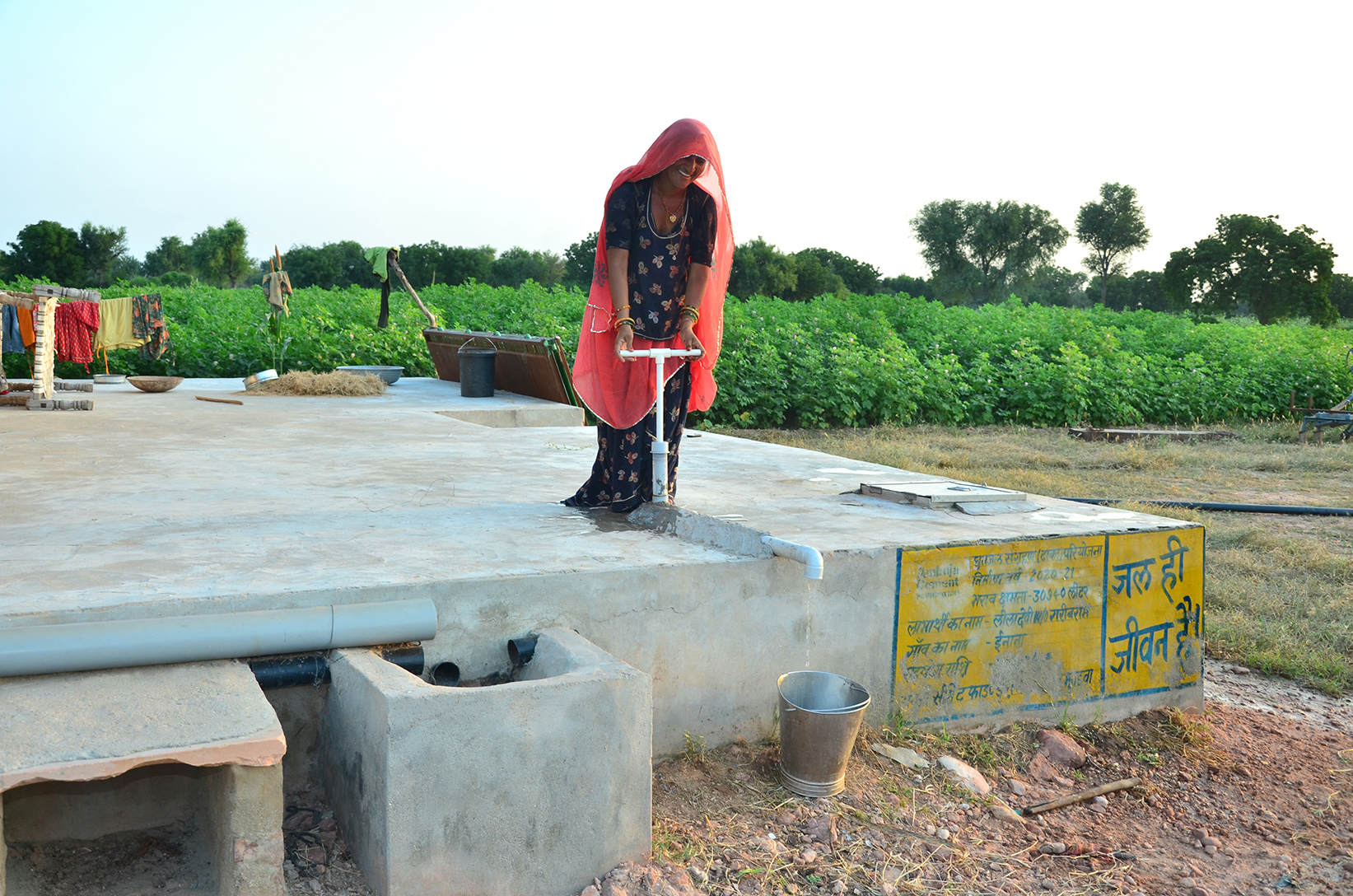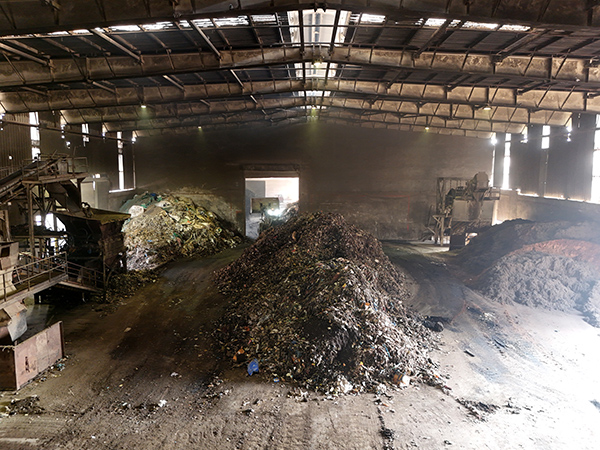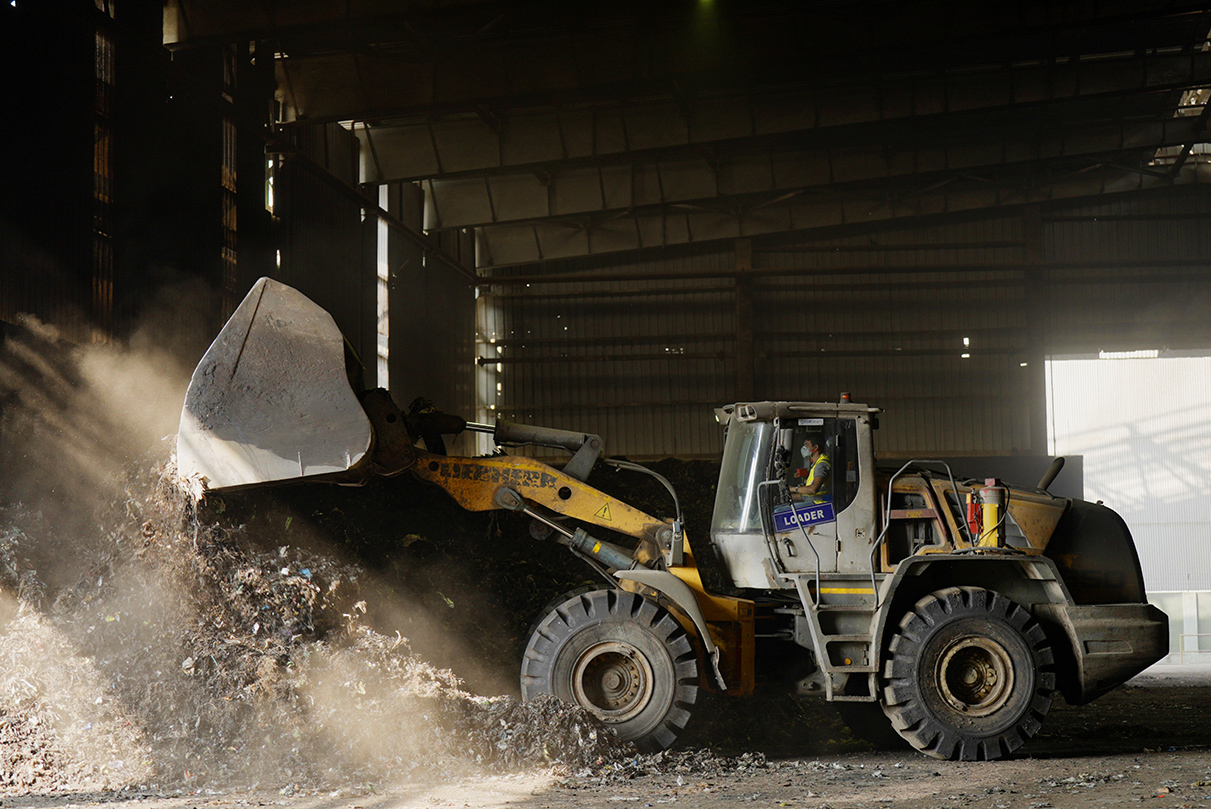Environment
Greener Practices
for a Better Future
The Company acknowledges climate-related risks and opportunities, including regulatory pressures, rising energy costs, extreme weather events, etc. With the growing demand for lower carbon emissions in cement manufacturing, the Company is investing in multiple initiatives to lower its carbon footprint.
SIL tracks its CO2 emissions from its integrated manufacturing unit. The plant's direct GHG emissions are predominantly CO2, with negligible contributions from non-CO2 gases.

Scope 1
- Calcination process of cement manufacturing
- Fuel combustion in kilns
- Combustion of fuels for power generation
- Fuel consumption in non-kiln operations like vehicles, DG sets etc.
Scope 2
Covers emissions linked to purchased electricity from grid
| Parameter | Unit | FY 2024-25* | FY 2023-24 |
|---|---|---|---|
| Scope 1 Emissions | Tonnes of CO2 | 2,017,934 | 12,89,519 |
| Scope 2 Emissions | Tonnes of CO2 | 17,656 | 3,301 |
*Due to increase in production of cementitious material
The Company is committed to reducing its greenhouse gas (GHG) emissions and contribute to a more sustainable future through multiple initiatives.

efficiency

fuels

products

Recovery
System

The Company aims to reduce its energy consumption by leveraging alternative fuels, adhering to regulatory requirements, setting energy-saving targets, and investing in green energy sources like WHRS. Thorough audits and meticulous tracking of energy consumption across facilities help map consumption patterns and implement effective energy conservation initiatives. The operations rely on a mix of energy sources, including fossil fuels, alternative fuels, on-site thermal power plant and WHRS, with a constant focus on reducing the energy footprint.
12,560,875 GJ
Energy consumption in FY 2024-25
The Company’s operations release air pollutants like Nitrogen Oxides (NOx), Sulphur Oxides (SOx), and particulates from fuel combustion and vehicle movement. It complies with regulatory requirements by reporting ambient air quality and stack emissions and keeping the emissions within permissible limits.
2,937 tonnes
NOx consumption in FY 2024-25
334 tonnes
SOx consumption in FY 2024-25
136 tonnes
Particulate matter (PM) in FY 2024-25

The Company strives to reduce its reliance on freshwater resources. Its freshwater needs are met from harvested rainwater in mine pits. For cooling purposes, the Company uses sea water. The sewage water gets treated in a sewage treatment plant, and the treated sewage water is recycled for use in gardening and dust suppression.
18,44,882 KL
Total Water Consumption
7,81,099KL
Total Harvested Rainwater Used
1,75,200 KL
Water Recycled
The Company embraces circular economy principles within the cement industry, integrating these concepts into its operations through process optimisation and stakeholder collaboration. It aims to substitute traditional cement manufacturing processes with co-processing to reduce the use of fossil fuels.
The Company has established waste management guidelines, including identification, segregation, collection, recycling and responsible disposal. Waste is segregated as hazardous or non-hazardous, stored separately and managed as per prevailing guidelines from regulatory agencies.

| Sr.no | Type of Waste | Quantity (MT) | Waste Management |
|---|---|---|---|
| 1 | Plastic Waste | 89 | Co-processed in cement kiln |
| 2 | Bio-medical Waste | 0.15 | Handed over to GPCB-approved agencies |
| 3 | Battery Waste | 0 | Returned to supplier under Extended Producer Responsibility |
| 4 | Hazardous Waste | 32 | Used for lubrication and or co-processed in cement kiln |
| Non-hazardous waste | |||
| 5 | Fly-Ash | 89,229 | Used for making blended cement |
| 6 | Refractory | 687.35 | Recycled |
| 7 | Kiln Process Dust | 642.80 | Landfill |
| 8 | Steel Scrap | 760 | Sold to authorised recyclers |

The Company leverages alternative fuel resources and has invested significantly in enhancing its pre-processing and co-processing infrastructure. This enables the transformation of diverse waste streams into a uniform mix suitable for cement kiln co-processing, effectively turning waste into an alternative resource, reducing dependence on fossil fuels, conserving natural resources and lowering greenhouse gas emissions.
91,441MT
Total Waste Generated in FY 2024-25
90,798MT
Total Waste Recycled in FY 2024-25
Zero
Hazardous Waste Sent to Landfill in FY 2024-25
Sanghi Industries Limited recognises the importance of biodiversity in maintaining ecological balance and contributing to the resilience of the environment. In Kutch, an arid region, the Company has undertaken initiatives like rainwater harvesting through check dams, microhabitat development, and tree planting to enhance the ecosystem and support drought mitigation.

The Company aligns with all applicable environmental laws in India, including the Water Act, Air Act and Environment Protection Act, along with their respective rules. It has required Environmental Clearance for its operations.
Adani Cement celebrated World Environment Day 2024 with a biodiversity-themed photo campaign, inviting employees to capture local flora and fauna with their scientific names. Complemented by sapling planting and creative competitions at cement plants, these activities fostered environmental awareness, emphasised biodiversity protection, and inspired a collective commitment to sustainable practices for a greener future.

62,685
Trees Planted Till Date
Surface mining operations involve milling and direct crushing to desired sizes, avoiding drilling, blasting, and primary crushing, which reduces pollution and ground vibrations. As the mines are in uninhabited areas, no resettlement is required. Water sprinkling on haul roads minimise particulate emissions, and post-mining pits will be repurposed for rainwater storage, aiding water conservation in Kutch's arid region. The Company’s Mine Management approach adheres to all applicable laws, regulations, and guidelines, ensuring environmentally sound and socially responsible operations.
Ambuja Cements marked World Nature Conservation Day 2024 with the #GreenGems Campaign, inviting employees to share captivating photos of flora and fauna. This initiative celebrated the beauty of nature and reinforced the Company’s ESG goals, inspiring a shared commitment to environmental conservation and promoting sustainability across operations.

